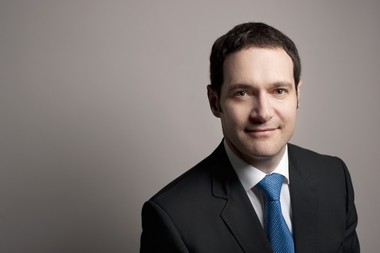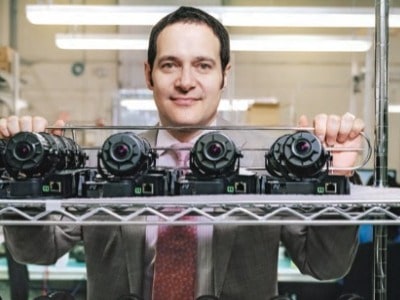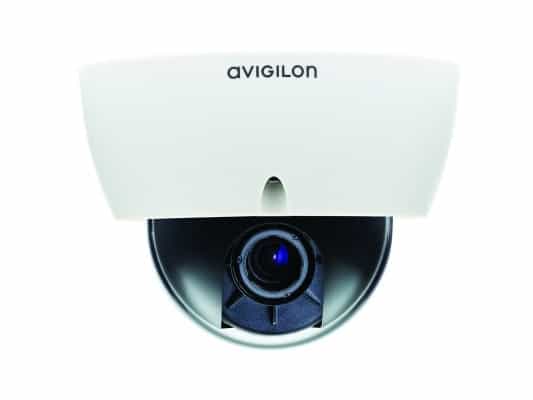Cantech Letter Interviews Alex Fernandes, CEO of Avigilon

The story of 2011 in Canadian tech was about the companies that left us. The Branham Group reports that last year, forty-five Canadian tech firms were acquired by foreign buyers.
Cantech Letter readers will know that many of them were public; Zarlink, Gennum, Ruggedcom, even our 2011 Canadian tech stock of the year, Mosaid were scooped up. And while the roster of TSX technology stocks has thinned, the IPO scene has been maddeningly quiet.
Rising above the sound of crickets in the space was the market debut of Vancouver-based Avigilon (TSX:AVO). Avigilon, which designs and sells high-definition surveillance products, came to Bay Street as a company posting torrid growth and has not missed a beat as a pubco. After debuting at $4.50 a share last November, Avigilon’s stock has been on the march as its numbers -the company’s Q1 revenue of $17.8-million was a 77% increase over the same period a year earlier- continue to impress. Cantech Letter’s Nick Waddell sat down with Avigilon CEO Alex Fernandes to talk about what’s next.
Alex, you had a successful IPO last year. What’s life been like as a public company?
It has been very positive. Many of the outcomes we have had since we predicted, but there have been some pleasant surprises along the way. The main thing now is that we are very well funded to execute on our growth plans. The market that we are targeting is the global video surveillance market. That market, by 2015, will be $29-billion per year. So it’s a very large and rapidly growing market. Demand for security is fueling it, but also the underlying cost of infrastructure is going down. Our systems run on IP infrastructure and so the entry level cost, for things like memory hard drives and storage are all going down.
You went public to capitalize on that market opportunity?
It was really to fund our growth. We wanted to double our sales team, double our product development team and increase our spend on marketing for the purpose of creating brand awareness. We have been in the market for about five years, but we are still, relatively speaking, a new entrant. One of the ancillary benefits of going public was that we gained an increased market profile, in general. Being public is more topical, more interesting for the media. We now have a platform to talk about what we do, and we have gotten a lot of media coverage from it. The other big benefit is the issue of corporate viability. When you’re private clients don’t really have a good sense of whether you are profitable or not.
Potential customers are looking at your books and saying “Hey this is a stable company”?
Absolutely, we know that for a fact. That’s a huge issue, particularly with large installations. A casino or an airport can spend millions on projects that they roll out over months, sometimes years. We also, unexpectedly experienced cost reductions in our materials. In supply chains there are a lot of smoke and mirrors. The manufacturers will inflate the sales projections to get the suppliers to drop he price and get the volume discount. Then once they get the pricing they issue a purchase order that is well below the projection. Now that we are public suppliers can see how big our orders are, and we have people beating a path to us trying to undercut each other just to get our business. Another unexpected benefit is that we picked up investment from customers, user , integrators, even employees.
Let’s get into your business with a Devil’s Advocate type question. When March Networks decided to sell itself last year, a lot of people said the price was quite low. What Terry Matthews said was that the company was getting killed by competition from China, and stuff they were selling a couple years ago for one price was going for a half or a quarter of that price today. I can’t reconcile that with the fact that your gross margins are improving….
That’s a great question, and I’m glad you asked it. We sometimes get the comparison, because March Networks was actually very successful at one time, and people want to know what makes us different. But once we explain the differences it all makes sense. First of all, it has nothing to do with China eating anybody’s lunch. We compete against Chinese manufacturers all the time and we win. What this is about is innovation. And that’s really what sets Avigilon apart from the competition: better innovation. This comes in the form of better products, better technology and better business processes. It’s about how we deliver the product, about after sale support, customer service. It’s more than just a product, it’s innovation in all aspects of our business. What we have done differently is design, from the ground up, the world’s first end to end video surveillance system designed specifically for high-definition. The majority of cameras sold today are still analog, mostly because of the lack of compatibility and standards in the digital domain.
There’s still a lot of runway for digital?
It’s really just getting started. I think there are three main reasons the transition is going to really accelerate now. We feel we have solved the inherent problems, and that’s why our sales are skyrocketing. The first barrier is cost. The market is very price sensitive, and isn’t willing to pay a premium for a superior product. They want it, but they don’t want to pay for it. The second is the lack of standards. Because of this most of the manufacturers in this industry are either camera makers or software companies, but neither makes an entire system. So there is no sense buying an HD camera if the recorder can’t talk to it. The third issue is ease of integration. In this industry there is usually a reseller channel between manufacturers and the end user. Those are resellers, or integrators. The reality of the business is that 80% of those integrators are not IT guys. We are a software company that happens to design and manufacture our own hardware. It’s fully integrated at the factory so we can totally control the user experience and its plug and play. So if you can install analog systems you can install an Avigilon system. That’s the biggest reason why the industry isn’t digital, it’s because most of the digital systems are cobbled together from multiple vendors. Using Avigilon’s iPhone app, customers can monitor their sites remotely in high definition. The state of the art cameras can easily identify a license plate number.
It’s not dependable or easy to install?
Exactly. A lot of time these systems are used in mission critical environments. If you have a system that is digital, but is not reliable, a lot of end users would rather take the analog system with 100% uptime. They want predictability. With our systems, the most inexperienced installers can install the most advanced system.
Are you finding that your video is admissible in court?
Absolutely. We worked very closely with law enforcement and the British equivalent to homeland security, the Home Office. One of the issues they have is to be able to assert the veracity of the video, meaning has it been photoshopped or tampered with. We designed our system with all of evidentiary needs in mind. Our corporate slogan is “The Best Evidence”. What we have done is put a digital hash on every image so we can assert, irrefutably, the date, time, location, and camera identity. You can email that video and it can be used to prosecute because it is tamper proof.
Is this a sales feature?
Well at the end of the day anything that delivers a return on investment is a sales feature. So much video is actually deployed for fraudulent slip and falls, for instance. This may sound trivial, but it’s a multi-billion dollar problem. We can affect this positively with our products.
You are near triple-digit topline growth and you are profitable. Have you ever been tempted to forgo the bottom line for a bit and do a land grab?
No, and I’ll tell you why. The way markets are these days people are gun shy. People want to invest in things that are safe. I think one of the reasons our IPO was successful is that people can’t deny that when you are growing in a profitable way you have a real business. We are operating the business for maximum growth while remaining profitable. By being profitable we are very much in control of our own destiny.
What do you hope to accomplish in the next twelve months?
I want to finish the execution of our 2012 plan, which we set out to do after the IPO. 2013 is largely going to be a continuation of 2012. There are other territories to expand into, such as India and China. We’re just in the process of setting up shop in Singapore as our launch pad for Southeast Asia. In existing domestic markets we want to increase our penetration. So what we are doing in Western Europe and North America is taking existing territories and breaking them down into smaller chunks to increase our coverage and penetration. We feel we are just scratching the surface in terms of that. Last year, at $60-million in revenue, we were less than one half of one per cent of the global market. Our objective is to get to half a billion in sales within the next five years, which would put us at a 1.5% market share. What’s it really coming down to is people. I want to continue to source new people and retain our existing staff and keep them motivated.
Nick Waddell
Founder of Cantech Letter
Cantech Letter founder and editor Nick Waddell has lived in five Canadian provinces and is proud of his country's often overlooked contributions to the world of science and technology. Waddell takes a regular shift on the Canadian media circuit, making appearances on CTV, CBC and BNN, and contributing to publications such as Canadian Business and Business Insider.


